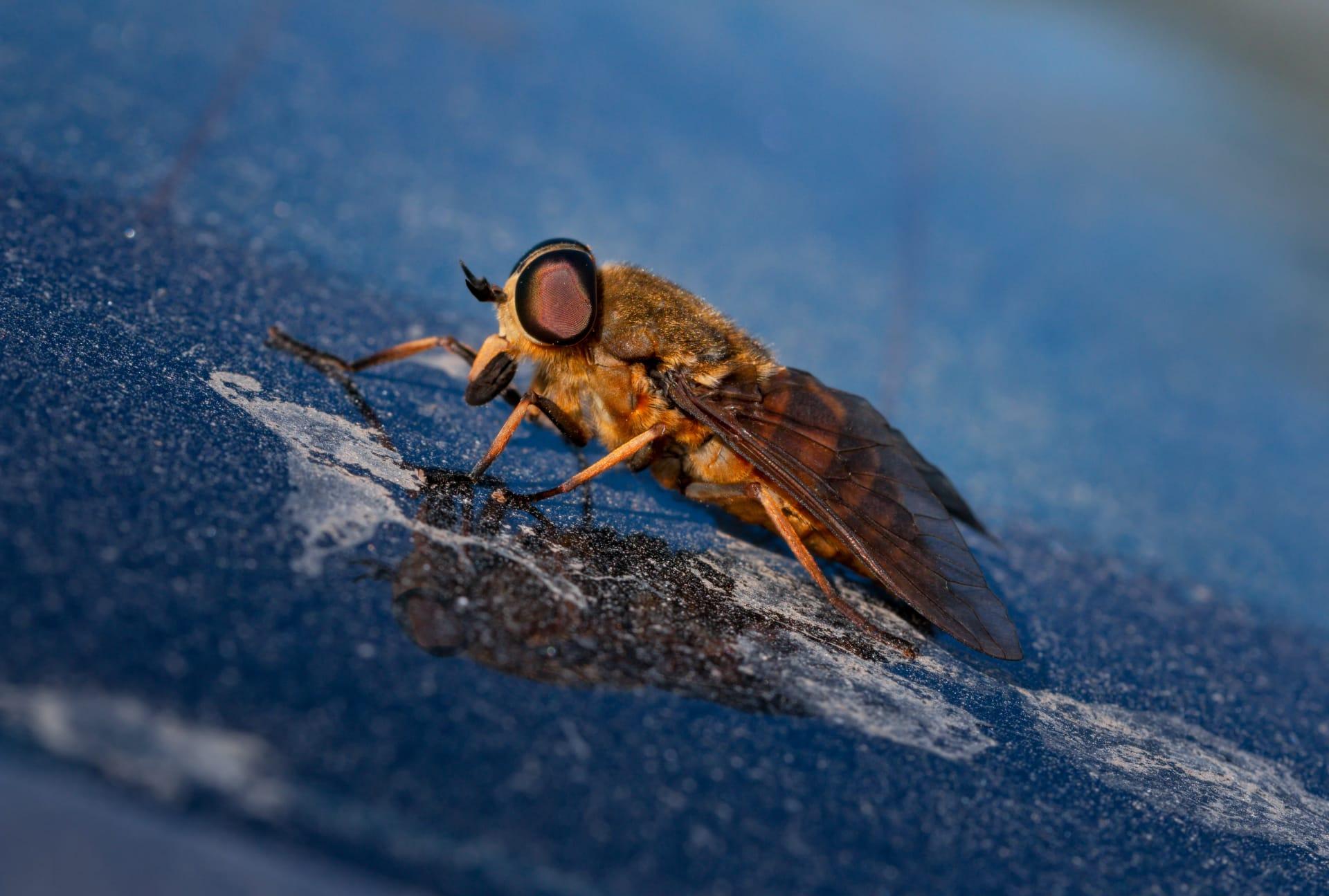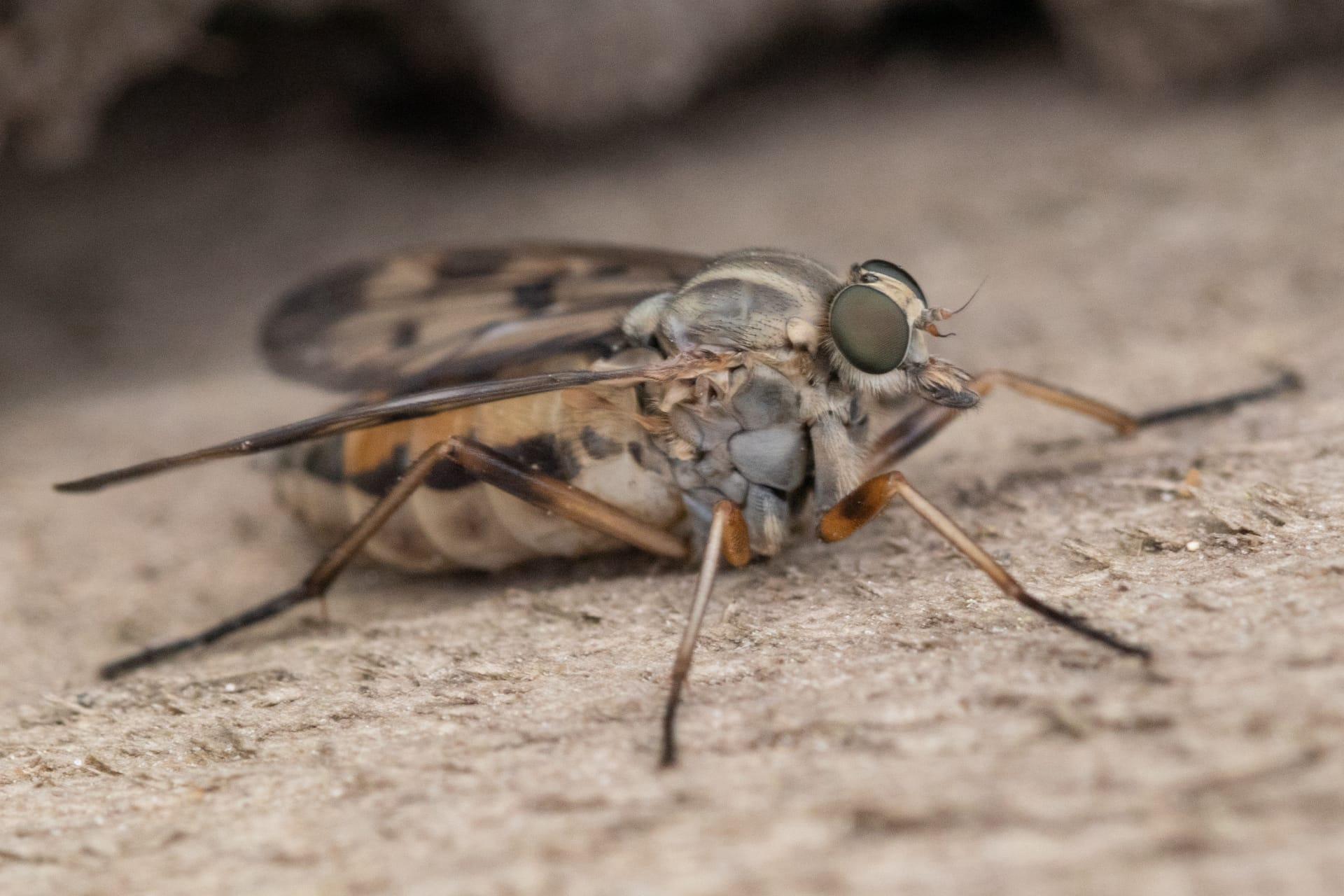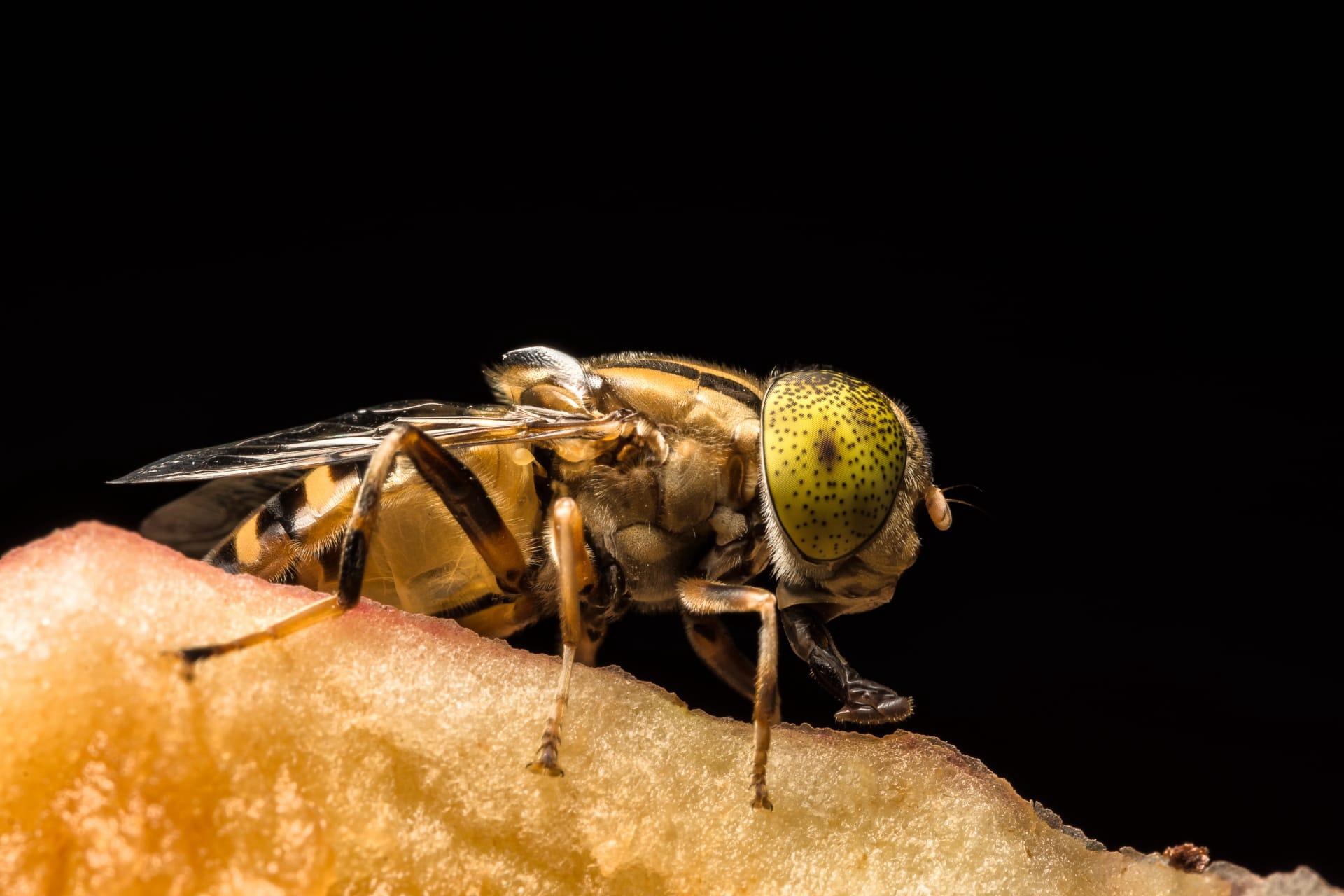Horseflies
- Home /
- Mini Encyclopedia /
- Animal /
- Horseflies
1
Horseflies, belonging to the family Tabanidae, are a diverse group of often large, stout-bodied flies. Globally, over 3,000 species have been identified, categorized into approximately 200 genera. The most recognized genera include Tabanus, Haematopota, and Chrysops. These species exhibit varying sizes and colors, but commonly, they have large compound eyes, often beautifully colored, and short antennae.
Horseflies are found worldwide, thriving in a variety of environments. They are most abundant in warm, humid areas, particularly near bodies of water, marshes, and forests. Their distribution spans from the tropical regions of Central and South America to the colder climates of Siberia and northern Canada. The prevalence of certain species varies geographically, with some being more dominant in specific regions, like Tabanus sudeticus, known as the dark giant horsefly, predominantly found in Europe.

2
Question: Is it true that all horseflies bite humans and animals?
Answer: No, not all horseflies bite. In fact, it's primarily the females that bite, as they require blood to develop fertile eggs. Male horseflies feed on nectar and are not equipped to bite. Female horseflies, however, have strong, saw-like mouthparts capable of cutting through skin. They are known for their painful bites, often targeting cattle, horses, and sometimes humans. Their bite is not only painful but can also transmit diseases in livestock.

3
Horseflies have developed unique survival strategies. One key strategy is their visual hunting technique. They are equipped with large, complex eyes that give them excellent vision, crucial for locating potential hosts from which they can obtain blood. This ability is particularly enhanced in females, who need to identify and approach animals or humans for their blood meal, essential for egg production.
Another survival strategy is their fast and agile flight. Horseflies are known for their ability to quickly maneuver and effectively escape predators. This agility also aids in their pursuit of moving hosts. Moreover, they often exhibit opportunistic feeding behavior, adapting to various environments and host availability, which enhances their survival in diverse habitats.

4
In the ecosystem, horseflies play significant roles in several relationships. Predominantly, they are parasitic to many mammals, including livestock and wildlife. Their parasitic nature can impact the health and behavior of these animals. For instance, heavy infestations can cause weight loss and decreased milk production in cattle. They are also vectors for certain pathogens, potentially spreading diseases like anaplasmosis and equine infectious anemia.
On the other hand, horseflies contribute to the ecosystem as prey for various predators. Birds, bats, and other insects often feed on horseflies, making them a part of the food web. Additionally, the larvae of horseflies, which typically develop in wetlands, help in controlling certain aquatic insect populations, thus maintaining ecological balance.

5
Film: "Winged Terrors: The World of Horseflies" is a recent documentary from the United States, released in 2021. It explores the life cycle and behaviors of horseflies, showcasing their impact on both wild and domestic animals. The documentary highlights their role in ecosystems and the challenges in controlling their populations.
Book: "The Secret World of Flies" by British entomologist Erica McAlister, published in 2017, delves into the fascinating world of flies, including a detailed chapter on horseflies. The book presents their biology, behavior, and the role they play in nature, aiming to change the public's perception of these often-misunderstood insects.
Book: "Insects of North America" by Canadian author David Phillips, released in 2019, offers an extensive overview of various insect species, including horseflies. It provides insights into their distribution, identification, and ecological significance, making it a valuable resource for both enthusiasts and professionals interested in entomology.